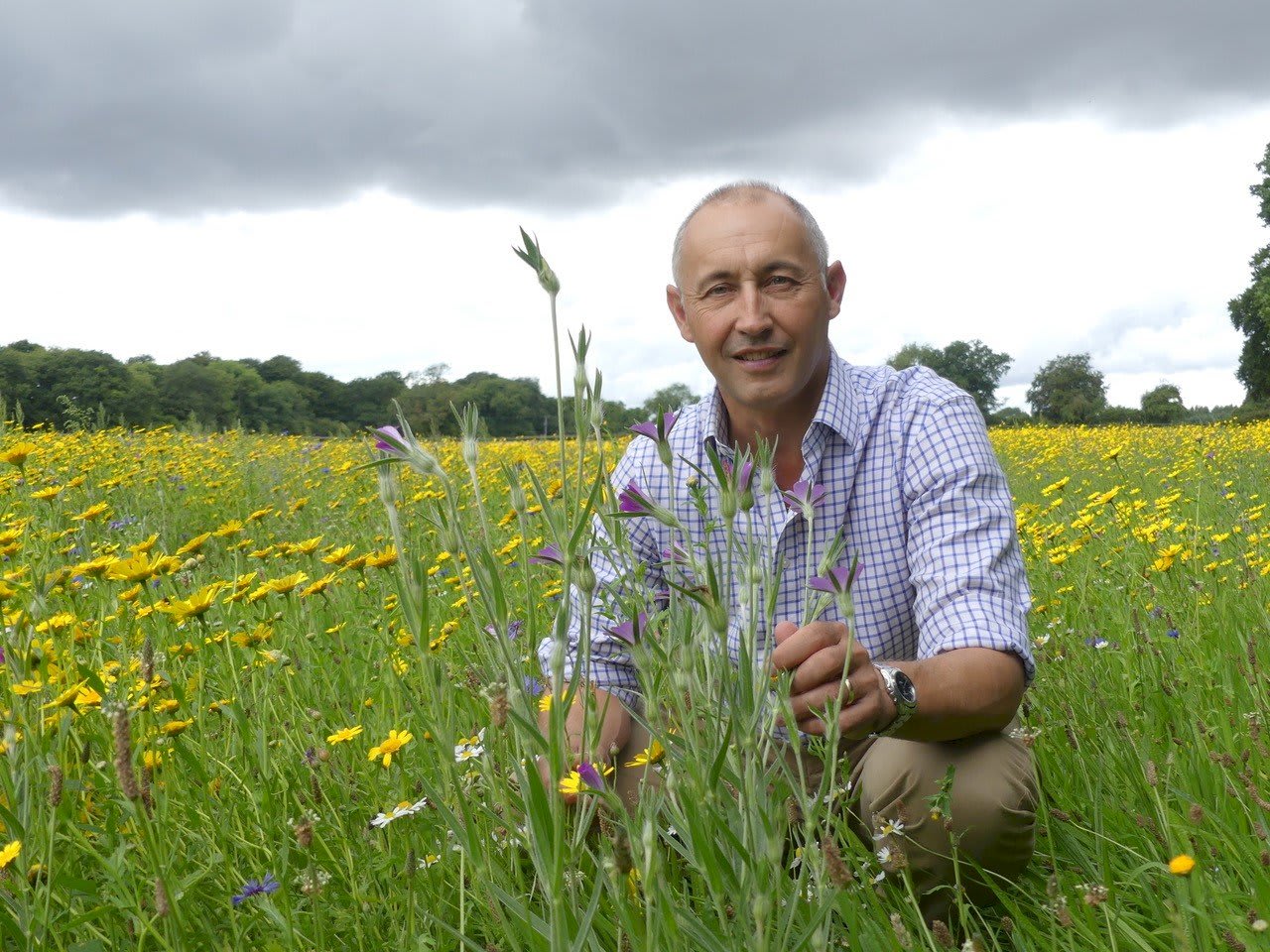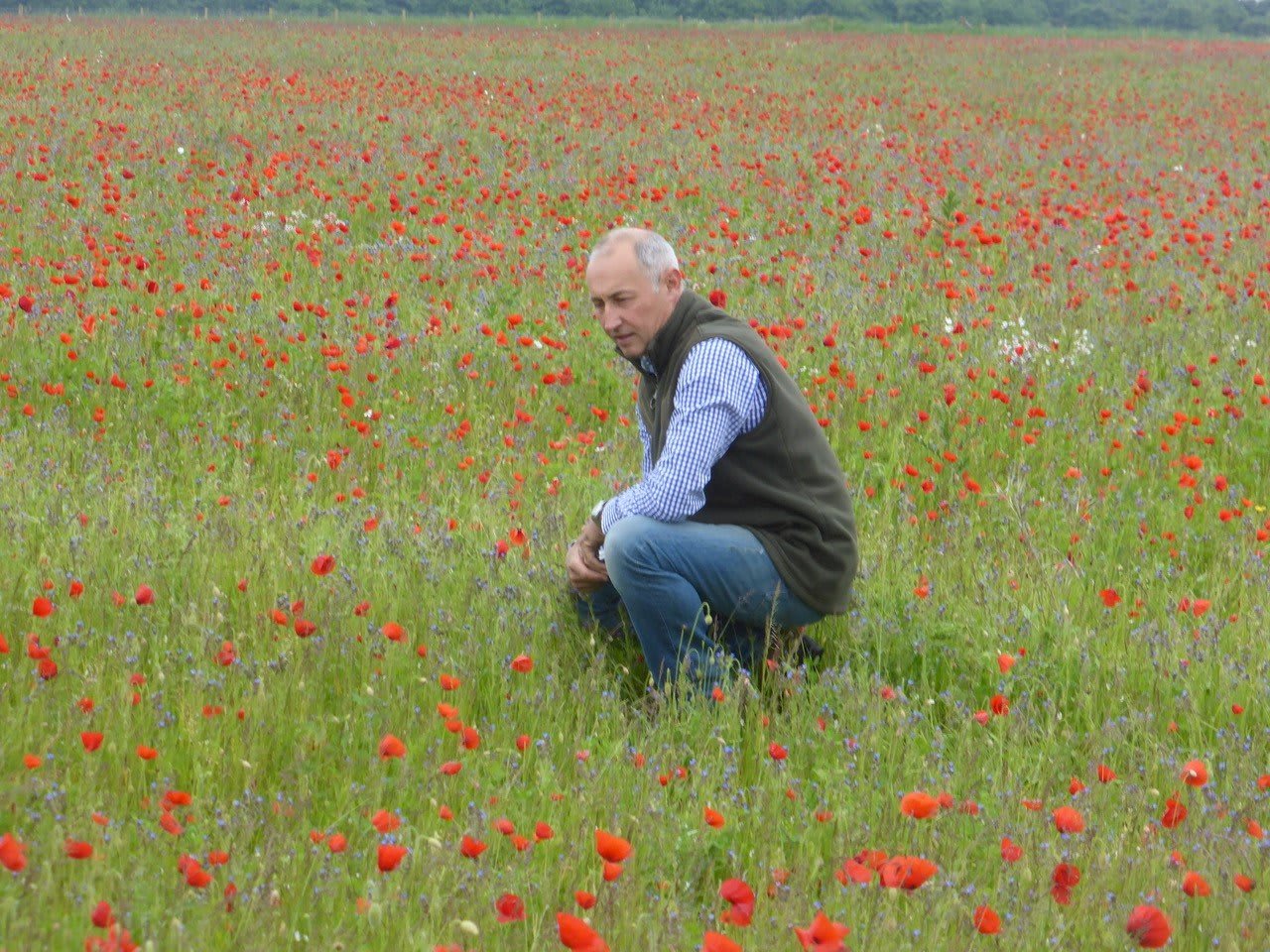Wildflower meadows can make a fantastic feature of any piece of spare land and help improve biodiversity.
We spoke on the subject to James Gillies, land management consultant and a regular contributor to OXcountry – James is the founder of the 100 Meadows initiative working towards reversing the trend in native wildflower meadow decline.
Having a wildflower meadow requires very little maintenance throughout the summer months, and in the main you just sit back to enjoy it from May to September. However, in late summer your meadow should be cut and cleared after it has dropped its seed.
Why should you cut back your meadow?
Meadows should be cut back to control the nutrient levels in the soil. Many of the most beautiful and diverse flowers thrive in poor quality soil. If the soil becomes very fertile from the rotting down of the dead materials over winter, grasses, weeds and only the strongest wildflowers will dominate over the following years. This is especially important on rich soils.
When should you cut and clear?
You should cut and clear from late August. Once the meadow has been cut, the cut material must be removed. If the cuttings are left to decompose on your meadow, the materials will return too many nutrients to the soil. You should ideally leave the cut material in situ for a few days to allow any remaining seed to drop to the ground, but no longer than that.
How to Cut Back Your Wildflower Meadow
There are several methods of cutting your meadow:
• Mow and bale
• Flail and then collect cut material in a hopper
• Mow or scythe then rake
• Mow or strim then collect with a mower collector
Each method has its advantages and disadvantages. The best option for you will depend largely on the size of the area to be cut and how much energy you want to put into it.
Mowing then Baling
Baling is an excellent option if you have a large area to clear and have access to a baler. Round balers will perform best for these types of meadow, as the vegetation may still be a bit damp. As an added advantage, bales can be left at the field margins to provide shelter for wildlife whilst they rot down. A local farmer or farm contractor can help you with this.
Scything and raking
Scything can be enormous fun if you know what you’re doing. You will be able to cut a large area in a short space of time and this is usually the cheapest option. The cut materials will need to be raked up then loaded onto a trailer and removed for composting. The most arduous part of the whole process is hand-raking, and can take a significant length of time to complete. A sharp scythe and wide rake are essential. Scything courses are run by Earth Trust and the Wildlife Trust. Alternatively, use a hedge trimmer.
One Pass Flail and Collect
The most efficient method to get the whole job done quickly on large areas is to do a one- pass cut and collect. I favour using a Ryetec flail collector which is mounted on a large tractor. This cuts and shreds the material and throws it straight into a hopper. When the hopper is full, it can be transported to a compost site and be tipped. With this method, the shredded material usually decomposes quickly as it has been reduced to small pieces. This one pass method is ideal if you are facing a short window of good weather, but the equipment is a major investment, so it is often more cost-effective to employ a contractor to undertake the work for you.
Mow or Strim and Collect
For smaller meadows, it is possible to mow or strim and then to leave the cut material in rows to dry out. It can be collected by hand or with a ride-on mower. This method works reasonably well in a small space but only when the meadow is dry, therefore cutting is best undertaken in August or early September, before the weather takes a turn for the worse. On poorer soil where there isn't too much grass you can leave your meadow uncut and it will die back, this provides excellent habitat for wildlife over winter, goldfinches especially favour picking out seed from teasels and knapweed. It will look a bit untidy and you may be left with more weeds in the coming years but this is often a sacrifice worth making.
I like to leave smaller patches or margins uncut to house wildlife over winter and cut the larger areas back to ensure a mixture of wildflowers and grasses year on year.











